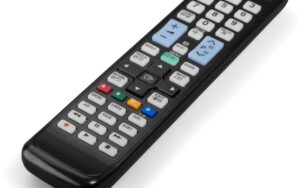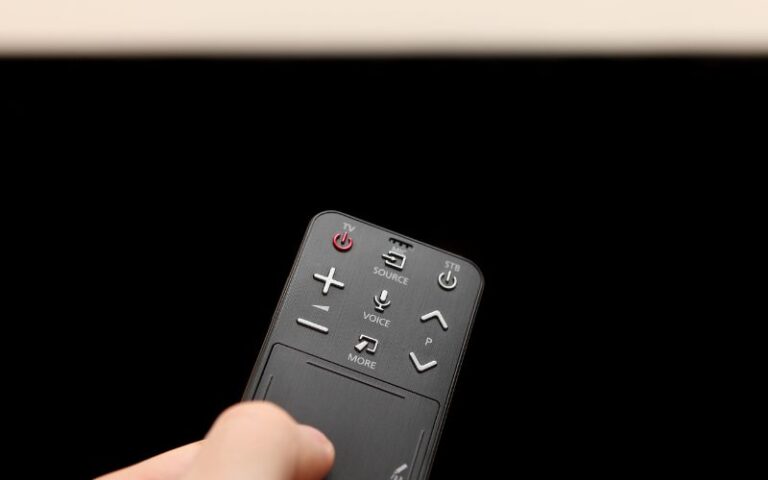This is Why Microwaves Take Longer With More Food in Them!
Have you ever tried heating food in the microwave, and it took more time than expected? You might think there’s a wrong setting somewhere or the microwave is malfunctioning.
However, the delay might be due to the food amount in the chamber. With the microwave’s operating principle, more food will take more time to cook.
Microwaves heat food by bombarding the food with microwave radiation. The radiation or photons rebounds across all walls of the microwave till the food absorbs it. With more food in the microwave, there’ll be less radiation going around for the food. Therefore, the microwave will need more time to heat the food items evenly.
This article gives an in-depth look at the microwave’s functionality, helping you to understand why the microwave takes more time with more food.
Additionally, you’ll learn techniques to hasten up cooking in the microwave.
Why Does It Take Longer to Microwave More Food?

The more food you have in the microwave, the more time it’ll take to cook. Before going further, you need to understand how a microwave works.
Microwaves cook food by bouncing ‘microwaves’ in the microwave chamber. These invisible waves make water, sugar molecules, and fat vibrate quickly.
This vibration results in rapid friction, which produces heat. The heat permeates the food from the outside before proceeding inside to about 4cm depth.
The microwave particles mostly attach to food with moisture. That is because moisture has water molecules that can agitate efficiently to produce heat.
The radiation enters the food’s exterior layer and begins intermingling with the water molecules in the outer layer.
This radiation transfers its energy to the molecules leading to the absorption of photons which heats the food particles.
Absorbed photons mean lesser intensity from microwave radiation. Since intensity drops as the heat make its way into the food, microwaves need more time to heat it.
The more portion of food in the chamber, the more time it’ll take microwaves to move through the food.
Also, microwaves don’t evenly fill the chamber. Instead, they emit a ‘standing wave form‘ featuring high-concentration and low-concentration areas.
Any item placed in the chamber alters this pattern. For this reason, microwave appliances feature a turntable.
The turntable tries to ‘cancel out the item’s exposure so the item can cook as evenly as possible.
What Determines Cooking Time In a Microwave?
Two things determine the cooking time in a microwave, the amount of food and the amount of moisture.
Let’s briefly look at how these factors influence cooking time.
Moisture in the Food
A microwave has its name because it discharges photons (light packets) in the range of microwave energy.
The photon’s wavelength is around 12cm, meaning it’s a large wavelength having little energy. This energy is invisible to the human eye.
Imagine a circle having a 4.7-inch diameter, something like a nerf ball. Then, visualize trillions of overlying nerf balls jumping around in your microwave at the speed of light.
However, these balls don’t touch each other; they move through the air and ignore themselves. Their main concern is to react with moist food.
This circle of microwave energy isn’t an actual physical size. Instead, it represents the area a photon can react with particles that can take in microwave energy.
Out of 10 electrons in one water molecule, 8 have an increased possibility of soaking up energy from the 12cm photon.
The question now is how many electrons can fix themselves within a circular area of 12cm diameter? Consider a cup of tea you want to heat up.
There are over 67 trillion upon trillions of electrons within the range of one photon.
This photon has a wave function of 12cm diameter that passes through the cup of tea at light speed. Be aware that the situation in the microwave is one of chance.
The photon aims to strike an electron and then cause it to spin in its magnetic direction 180°. In a short time, the electron will flip in the opposite direction.
This flipping creates vibrations which cause friction among the molecules. As these molecules continue vibrating, heat generates and cooks the food.
As a result, food containing water molecules will heat up faster and cook more quickly. Conversely, other food with fewer water molecules will take more time to cook.
Food Amount
The amount of food items you’ve put in the microwave also determines how fast the food will cook. For example, say you put a doughnut in the microwave to heat up.
The possibility of photons getting soaked up by the doughnut reduces when you put a second donut in the microwave.
Each doughnut now has half a chance of absorbing photons. Add in a third doughnut, and the chances of each doughnut taking in photons drop to 1/3.
This concept also applies to other food items. The more food you have in the microwave, the more time it’ll take to absorb photons.
Therefore, you must let the microwave operate longer so the food can cook efficiently. Also, some areas in the microwave chamber have dead spots.
Dead spots are areas where the photons have little to zero possibility of soaking up your food. Hence, the turntable in the microwave spins, so the food will heat up more quickly.
The microwave platter turns because of this lesser possibility of the photons getting into the food.
It allows each part of the food to pass through areas with a higher chance of photon assimilation.
With this principle of operation, the amount of food in the microwave can determine the time taken for cooking.
Is It Time Efficient to Microwave Two Servings Separately?
It’s not time efficient to microwave two servings separately. If you microwave two servings of a meal, it’ll require less than double the time needed to microwave a serving.
Here’s how the math checks out. First, the microwave producer, known as a magnetron, isn’t aware of what’s in the microwave chamber.
The magnetron emits a steady level of microwave radiation at all times. The magnetron will toggle on and off if you fix the power at 50%.
It toggles to maintain full power for part of the time. Know that various foods soak up microwaves to various extents.
For instance, assume a serving soaks up 40% of the radiation that bombards it. As a result, 60% of the microwave’s output remains unabsorbed.
Let’s put a similar serving in the microwave with the initial serving. This second serving will take in 40% of the available microwaves in the chamber.
Remember that 60% of microwave radiation remains unabsorbed by the first serving. Therefore, the second serving will soak in 40% of the 60%. 40 X 60/100 = 24.
From the math above, the second serving will consume 24% of the remaining microwave radiation. Hence, the total portion of absorbed microwave radiation will be 40 + 24 = 64.
Logically you would expect that the second serving would absorb its own 40%, but this isn’t the case. The time the microwave will heat the two servings will be by a factor of 80/64.
This math means that if a single serving takes 9 minutes, the two servings combined will take 9 X 80/64.
That math will give you 11.25 minutes, which is much less than double the time. From this explanation, we can conclude that microwaving two servings separately is time-wasting.
The combined duration of microwaving servings separately will be more than microwaving them at once.
Therefore, you can microwave two servings together if there’s enough space in the microwave chamber.
Does Cooking Different Food Items Affect the Microwave Time?
Cooking several food items will affect microwave time. However, you’ll first need to understand that the microwave is selective to water molecules.
The photons in the microwave are more likely to cling to water molecules quicker than other particles.
With this mode of operation, food with moisture will cook up faster than those with little or no moisture. Furthermore, the more food items in the microwave, the more time it’ll take.
More food items will take up space and reduce the possibility of photon assimilation.
However, there are techniques for reducing cooking time in the microwave.
| Technique | Execution |
|---|---|
| Break and stir | You’ll need to regularly switch the location of the food items in the chamber. |
| Cut thin layers | If you can, chop your food into little pieces to enable faster cooking. |
| Use of water | Since water assists in transferring heat, wash some of the food items. |
| Sprinkle salt on food | Sprinkling salt helps to attract photons which will heat the food. |
| Container placement | You should place the food at the turntable’s edge to receive better heat. |
| Use of cling film | Place plastic film on food with a high moist amount and tear a hole in it to enable venting. |
Applying the above techniques will hasten microwave cooking.
You May Like To Read
- 3 Reasons Your Whirlpool Microwave Display is Not Working!
- 5 Reasons That Microwave Plates Break!
- 5 Reasons Your Frigidaire Microwave Keeps Tripping Breaker!
- Can A Microwave Be Plugged Into Any Outlet? (Explained)
- Can You Microwave Things that Say Oven Only? (Explained)
- Can You Put Two Items in Microwave Together? (Read This First)


















